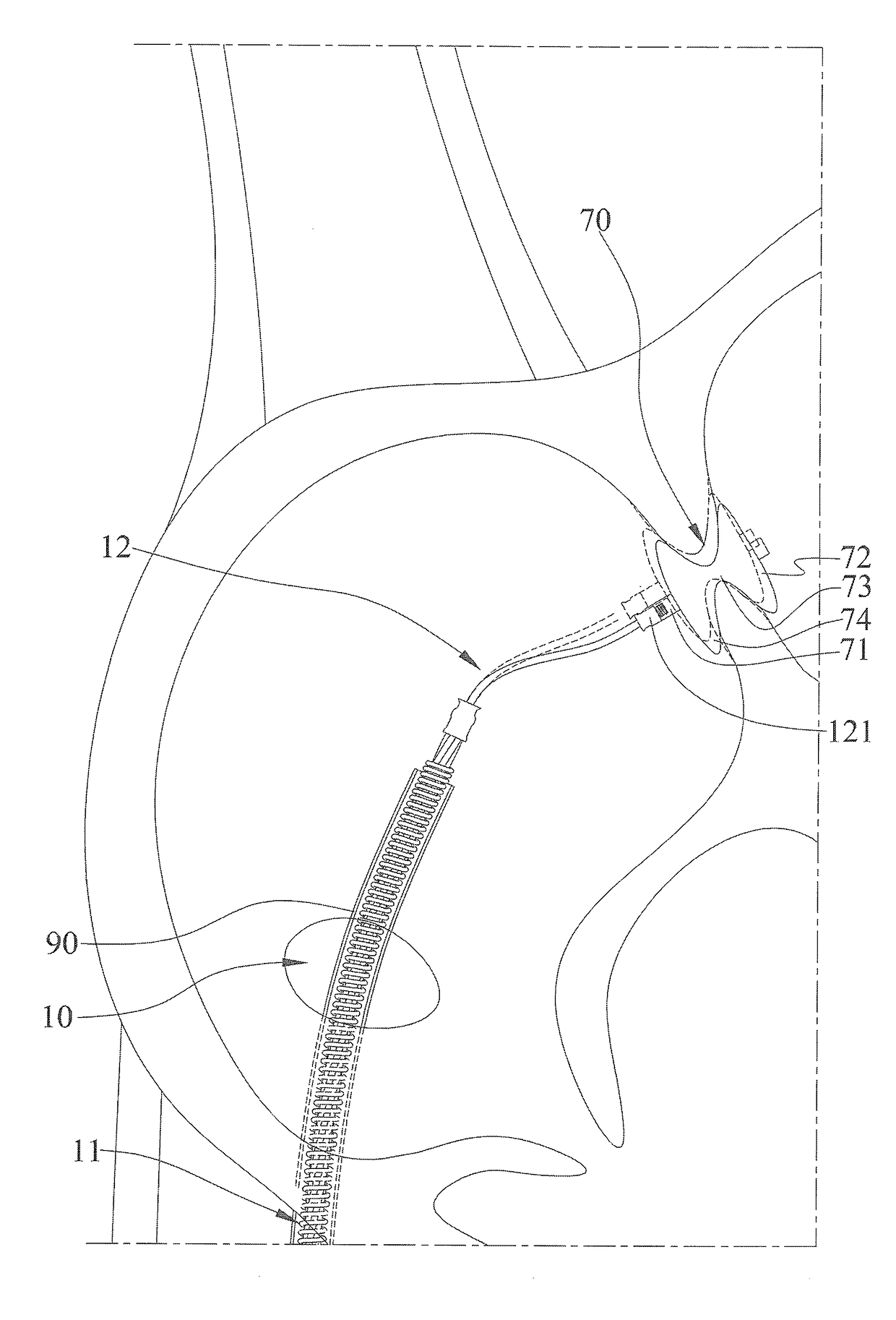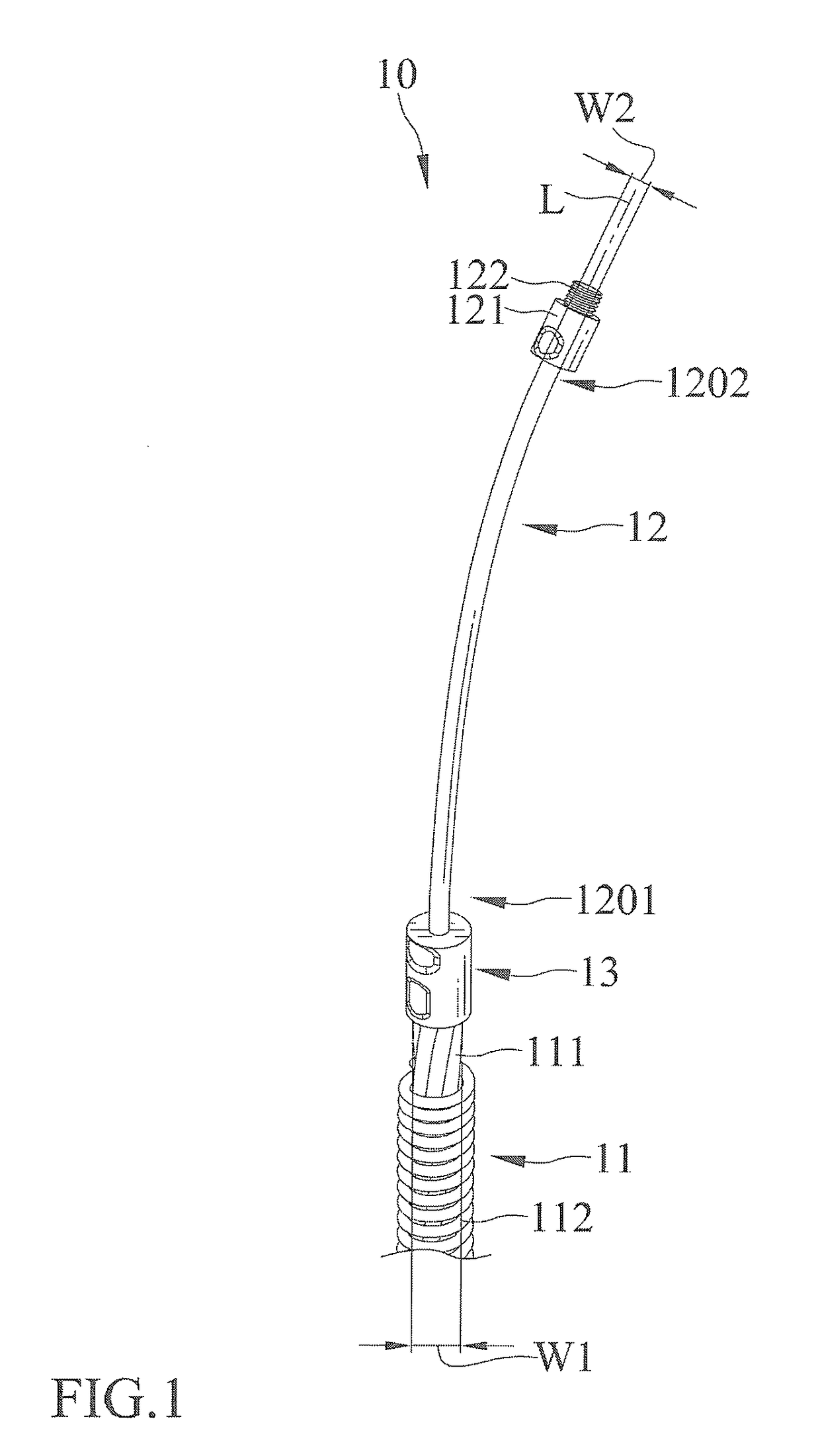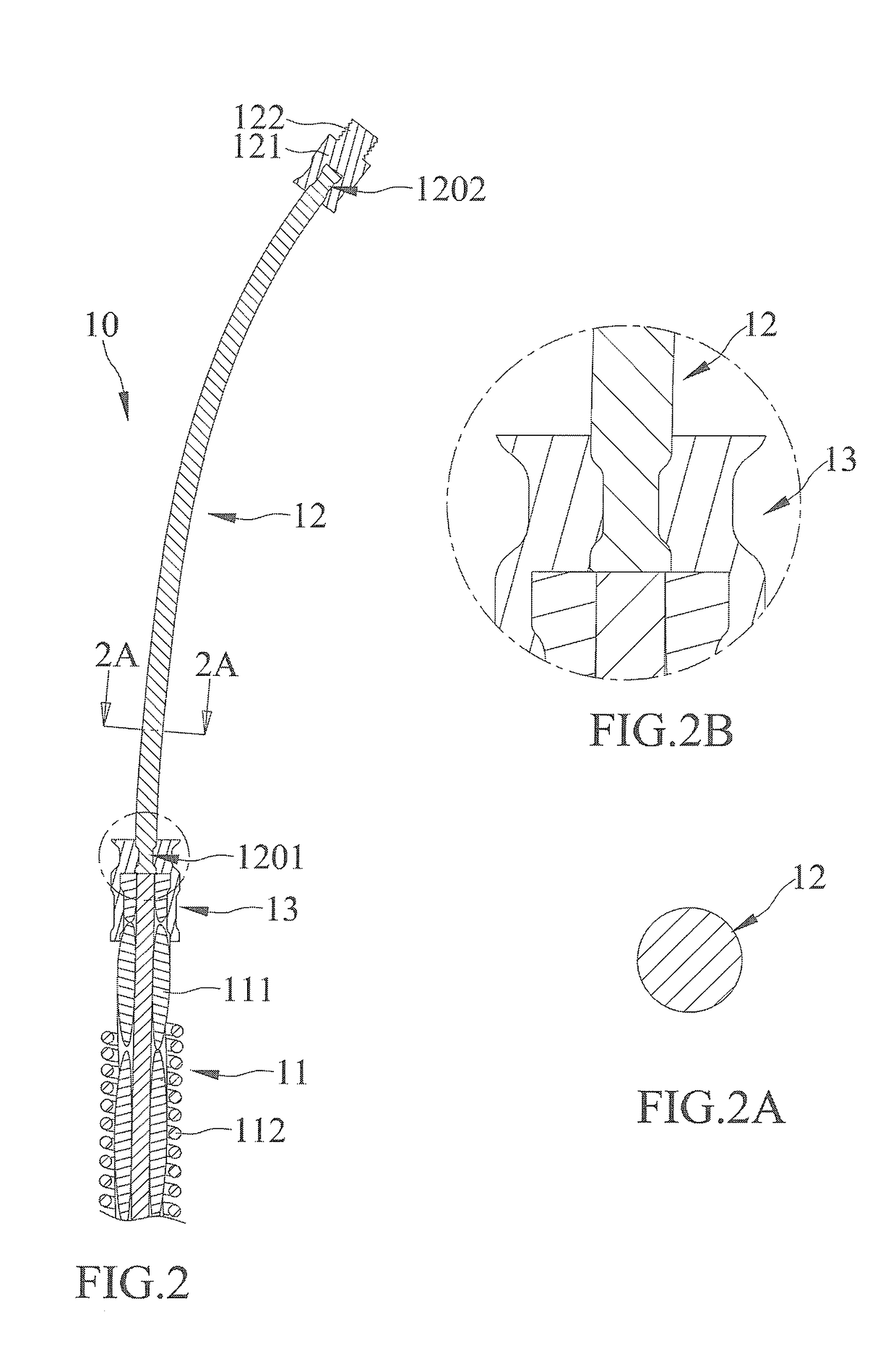Delivery Apparatus for a Medical Device
a technology for medical devices and delivery devices, applied in the field of delivery devices, can solve the problems of only being able to treat children older than 5 years of age, the heart of the fetus grows abnormally, and the congenital heart defect is a problem, so as to avoid the use of medical devices
- Summary
- Abstract
- Description
- Claims
- Application Information
AI Technical Summary
Benefits of technology
Problems solved by technology
Method used
Image
Examples
first embodiment
[0056]FIGS. 1-5 show a delivery apparatus 10 of a first embodiment according to the present invention. The delivery apparatus 10 is configured to deliver a medical device 70 to a heart defect in a heart by a catheter 90. In this embodiment, the heart defect is an atrial septal defect, and the medical device 70 is a septal defect occluder (hereinafter occluder 70), such as Amplatzer septal occluder. Occluder 70 is obtained by weaving nickel-titanium shape memory alloy into a reticulate metal structure and has spontaneous expansion properties. In this embodiment, occluder 70 includes an end having a threaded portion 71 for connection with delivery apparatus 10. Threaded portion 71 is a nut including a central hole having an inner thread. Furthermore, occluder 70 includes left and right atrial discs 72 and 74 having spontaneous expansion properties and a waist 73 between left and right atrial discs 72 and 74.
[0057]Delivery apparatus 10 includes a first wire section 11 and a second wire...
third embodiment
[0071]FIGS. 7-9 and 9A show a delivery apparatus 10 of a third embodiment according to the present invention substantially the same as the first embodiment. The third embodiment is different from the first embodiment by that second wire section 12b includes a flexible portion capable of absorbing interfering vibration from the heartbeat. The flexible portion includes a first portion 123b and a second portion 124b. Each of first portion 123b and second portion 124b extends along virtual axis L. First portion 123b has a uniform cross sectional area that is perpendicular to virtual axis L and that is equal to the maximum cross sectional area of the flexible portion of second wire section 12b. Second portion 124b has a uniform cross sectional area smaller than the uniform cross sectional area of first portion 123b. First portion 123b has a first end securely connected to the distal end of first wire section 11. Second wire section 12b has a first end connected to a second end of first p...
fourth embodiment
[0078]FIGS. 10 and 11 show a delivery apparatus of a fourth embodiment according to the present invention substantially the same as the third embodiment. The fourth embodiment is different from the third embodiment by that each of first coupler 14c and second coupler 15c is integrally formed. Two ends of first coupler 14c are securely connected to first portion 123c and second portion 124c. Two ends of second coupler 15c are securely connected to second portion 124c and third portion 125c.
[0079]In view of the foregoing, delivery apparatus 10, 10a according to the present invention includes the following advantages:
[0080]1. When occluder 70 is delivered by delivery apparatus 10 to the heart defect and is seated in a deployed position occluding the heart defect after catheter 90 is retracted, second wire section 12, 12a, 12b, 12c is configured to have a flexibility maintaining connection with occluder 70 to absorb interfering vibration from the heartbeat. Furthermore, during release ...
PUM
 Login to View More
Login to View More Abstract
Description
Claims
Application Information
 Login to View More
Login to View More - R&D
- Intellectual Property
- Life Sciences
- Materials
- Tech Scout
- Unparalleled Data Quality
- Higher Quality Content
- 60% Fewer Hallucinations
Browse by: Latest US Patents, China's latest patents, Technical Efficacy Thesaurus, Application Domain, Technology Topic, Popular Technical Reports.
© 2025 PatSnap. All rights reserved.Legal|Privacy policy|Modern Slavery Act Transparency Statement|Sitemap|About US| Contact US: help@patsnap.com



